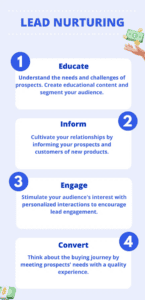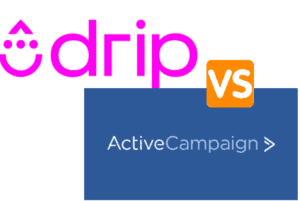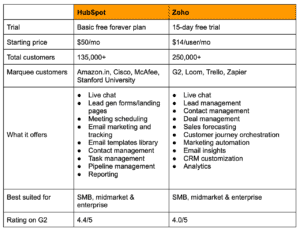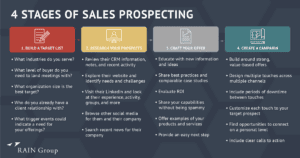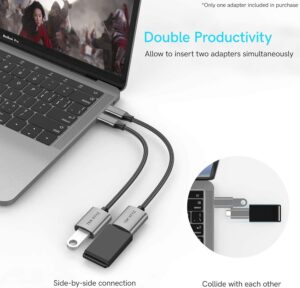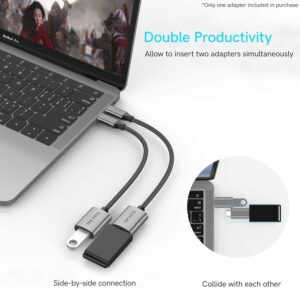Mastering Sales Pipelines: A Guide to Closing Deals Faster
Sales pipelines are the backbone of any successful sales process. Whether you’re running a small business or managing a large enterprise, understanding and optimizing your sales pipeline can dramatically improve your revenue and help your team close deals faster. This article will guide you through the essentials of sales pipelines, explain their importance, and offer actionable strategies for improving your pipeline management.
A well-structured sales pipeline provides visibility into your sales team’s progress and helps you predict revenue, manage leads, and streamline sales operations. Here’s how to get started.
What Is a Sales Pipeline?
A sales pipeline is a visual representation of where your prospects are in the sales process. It helps you track and manage your leads as they move through various stages, from initial contact to closing the deal. A typical sales pipeline includes stages like:
- Lead generation: Identifying potential customers through marketing efforts.
- Qualification: Determining if the lead has the need, budget, and authority to purchase.
- Meeting: Engaging the lead through product demos or consultations.
- Proposal: Presenting an offer or pricing to the lead.
- Negotiation: Handling objections and refining the offer.
- Closing: Sealing the deal by securing a commitment.
By organizing leads into these stages, sales teams can manage their workload effectively and ensure that no opportunities are missed.
The Importance of Sales Pipelines
1. Improved Sales Forecasting
Sales pipelines provide real-time data on where each prospect is in the buying process. This helps managers predict future revenue and make informed decisions about resource allocation.
2. Better Lead Management
Sales pipelines offer clear visibility into your leads and prospects, allowing sales reps to prioritize opportunities that are most likely to close. This ensures that high-potential leads get the attention they deserve.
3. Streamlined Sales Processes
A well-defined sales pipeline standardizes your sales process, making it easier for team members to follow best practices and replicate success. This consistency leads to faster deal closures and fewer lost opportunities.
4. Increased Accountability
With sales pipelines, managers can track individual performance by monitoring how quickly leads move through the pipeline. This encourages accountability and allows for performance improvements where necessary.
5. Enhanced Communication
A shared sales pipeline keeps everyone on the same page. Sales teams, marketing departments, and management can all access the same data, fostering better collaboration and alignment across the organization.
How to Build a Successful Sales Pipeline
1. Define Your Sales Stages
The first step in building a sales pipeline is to define the stages that represent your sales process. Make sure each stage corresponds to a meaningful action that moves the lead closer to a purchase. For example, stages could include “Initial Contact,” “Needs Analysis,” “Proposal Sent,” and “Deal Closed.”
2. Identify Your Ideal Customer Profile
Understanding your ideal customer profile (ICP) ensures that your sales pipeline is filled with high-quality leads. Collaborate with your marketing team to create buyer personas based on real customer data, which will help you target the right prospects.
3. Use Lead Scoring
Lead scoring helps sales teams prioritize leads by assigning points based on actions taken by the prospect (e.g., attending a webinar, downloading an ebook). This ensures that your sales reps focus on the leads most likely to convert.
4. Automate Your Pipeline
Automation tools can significantly streamline your pipeline management. CRM tools like HubSpot or Salesforce can automatically move leads from one stage to the next, send follow-up emails, and notify sales reps when it’s time to take action.
5. Set KPIs for Each Stage
Set clear Key Performance Indicators (KPIs) for each stage of your pipeline. For example, you might measure the number of new leads, the conversion rate from proposal to closed deals, or the average time spent in each stage. These metrics will help you spot bottlenecks and improve your sales process.
6. Review and Optimize Regularly
Your sales pipeline is not static. Regularly review and optimize your pipeline based on performance data. Identify where deals tend to stall and develop strategies to push leads through the pipeline more efficiently.
Common Sales Pipeline Mistakes to Avoid
1. Ignoring Inactive Leads
One of the most common mistakes in sales pipeline management is allowing inactive leads to accumulate. Leads that haven’t shown interest in a long time should be nurtured through other marketing efforts or removed from the pipeline.
2. Overcomplicating Your Pipeline
While it’s essential to have a defined pipeline, adding too many stages can make it harder for your sales reps to track progress. Stick to a streamlined process with meaningful stages that drive action.
3. Lack of Follow-Up
Many sales fall through due to poor follow-up. Automating reminders and follow-up emails can keep leads engaged and prevent them from slipping through the cracks.
4. Failing to Qualify Leads
Spending time on leads that are unlikely to convert wastes valuable resources. Implement a solid qualification process early on to ensure that your pipeline is filled with prospects who fit your ideal customer profile.
How to Optimize Your Sales Pipeline
1. Shorten the Sales Cycle
Analyze your pipeline to identify stages where leads tend to stall and take action to streamline those stages. This might involve offering more direct communication, addressing objections earlier, or providing additional incentives to close the deal.
2. Increase Automation
Take advantage of automation to handle administrative tasks like scheduling follow-up emails, generating reports, and tracking customer interactions. This will free up time for your sales team to focus on selling.
3. Improve Lead Nurturing
Not every lead is ready to buy right away. Implement a lead nurturing strategy that keeps your prospects engaged through personalized emails, educational content, and periodic check-ins until they’re ready to make a decision.
4. Monitor Key Metrics
Pay attention to metrics like deal velocity (the average time it takes to close a deal), conversion rates at each stage, and win rates. Use these insights to identify areas for improvement and adjust your strategy accordingly.
FAQs
What is a sales pipeline?
A sales pipeline is a visual representation of the stages a prospect goes through during the sales process. It helps sales teams track and manage their leads as they move toward closing a deal.
How can I improve my sales pipeline management?
Improving sales pipeline management involves automating tasks, regularly reviewing pipeline performance, prioritizing high-quality leads, and optimizing stages where deals tend to stall.
What is the difference between a sales pipeline and a sales funnel?
A sales pipeline focuses on the stages a sales prospect goes through, while a sales funnel tracks the conversion rate of prospects as they move from being leads to paying customers. Both tools work together to improve sales performance.
How do CRM tools integrate with sales pipelines?
CRM tools like Salesforce or HubSpot allow you to track and manage your sales pipeline, automate lead nurturing, and provide valuable insights to optimize the sales process.
Why do sales pipelines fail?
Sales pipelines often fail due to poor follow-up, an overcomplicated process, inactive leads cluttering the pipeline, and a lack of qualification for leads. Regular review and optimization can help avoid these issues.
Top Tools to Simplify and Scale Your Sales Pipeline
- HubSpot CRM: HubSpot offers an intuitive sales pipeline management system that integrates with your entire sales and marketing stack. It’s user-friendly, automated, and ideal for small to large businesses.
- Pipedrive: Pipedrive is a CRM tool that focuses on visual pipeline management. It helps sales teams track deals at every stage, offering easy-to-use features for deal forecasting and reporting.
- Salesforce: As one of the most robust CRM systems on the market, Salesforce provides powerful pipeline management features that allow businesses to customize stages, automate tasks, and gain detailed insights.
- Zoho CRM: Zoho CRM is known for its affordability and flexibility. It allows businesses to manage their sales pipeline, automate follow-ups, and track key metrics to improve sales performance.
- Keap (formerly Infusionsoft): Keap specializes in CRM and marketing automation for small businesses. Its sales pipeline tools help manage leads, automate follow-ups, and close deals faster.
Keywords: sales pipeline, pipeline management, lead generation, sales automation, deal closing, CRM tools, sales process, lead nurturing, sales forecasting
Category & Subcategories: Sales, Sales Pipelines, CRM Tools


